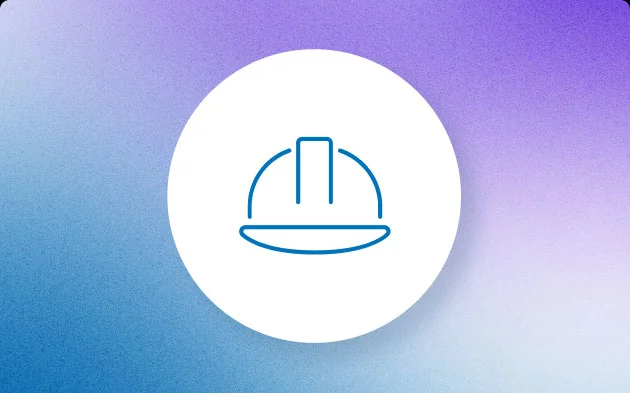Three ways to reduce hospital facility maintenance costs
Adopting cost-saving strategies enable healthcare facility maintenance teams to enhance patients’, professionals’, and visitors’ experiences.

Effective cost management is essential for healthcare facilities to deliver the best possible patient care while ensuring financial stability. Among the several methods to minimize maintenance expenses in healthcare facilities, three key approaches are life cycle costing, vendor management, and performance metrics monitoring. By adopting these strategies, healthcare organizations can streamline operations, boost cost efficiency, and enhance overall facility maintenance.

Life cycle costing
Lifecycle costing involves analyzing the complete expenses associated with owning an asset from its inception to its disposal. This strategic approach equips healthcare establishments with essential information to make well-informed choices regarding asset procurement, upkeeping, renewal, and removal.
1. Strategic asset procurement: Besides considering the upfront purchase cost, the lifecycle costing methodology encourages a deeper evaluation of ongoing expenses, encompassing regular maintenance, necessary repairs, and day-to-day operational expenditures. By embracing this approach, healthcare institutions can strategically opt for assets that not only fulfill their immediate requirements but also promise sustained value over the long term. This alignment ensures that the assets chosen align seamlessly with the facility's evolving needs and contribute to its overall operational efficiency.
2. Preventive maintenance: At the heart of the lifecycle costing approach lies the concept of preventive maintenance. This practice involves regularly scheduled upkeep to identify and address potential issues before they escalate into more severe and costly problems. By diligently adhering to preventive maintenance schedules, healthcare facilities can substantially mitigate the risk of unexpected downtime. Moreover, the extended lifespan of assets resulting from proactive maintenance efforts further diminishes the need for frequent repairs, consequently reducing associated expenses.
3. Asset replacement and responsible disposal: The lifecycle costing model introduces a strategic approach for determining the optimal timing for asset replacement. This decision-making process is influenced by multiple factors, including ongoing maintenance costs, technology advancements, and energy efficiency. By closely evaluating these factors, healthcare organizations can avoid replacing assets too soon and prevent holding onto old equipment that costs a lot to maintain.
Additionally, responsible disposal is a crucial part of lifecycle costing. It encourages healthcare facilities to consider environmentally-friendly disposal methods like recycling and salvaging, which not only match sustainability objectives but also have the potential to save costs.
Vendor management
Effective vendor management goes beyond simple transactional relationships. It ensures healthcare facilities forge lasting partnerships that bring value through well-informed decision-making, reliable performance, and optimized resource allocation.
1. Smart selection through competitive bidding: Healthcare establishments can secure the most favorable pricing by seeking quotes from multiple vendors. This practice empowers decision-makers with a comprehensive understanding of available services, warranties, and the vendor's experience. By making informed comparisons, facilities can confidently choose the options that align best with their needs.
2. Ensuring performance with Service Level Agreements (SLAs): Establishing clear expectations and performance benchmarks through SLAs is key to cost optimization. Regular monitoring of vendor performance against these agreed-upon standards is crucial, holding vendors accountable for consistently meeting the outlined metrics. This proactive approach helps maintain a high level of service quality and fosters transparent communication between healthcare facilities and their vendors.
3. Efficiency through consolidated purchasing: By harnessing the power of bulk purchasing, healthcare entities can unlock the potential for negotiated volume discounts with vendors. Centralizing procurement processes eliminates redundant efforts and promotes streamlined operations, leading to increased efficiency and reduced administrative burden.
Performance metrics tracking
Diligently monitoring facility performance metrics serves as a compass for pinpointing areas where inefficiencies lurk, gauging progress, and guiding decision-making through a data-driven lens.
1. Maintenance costs as a percentage of asset value: By continually observing the proportion of maintenance costs relative to the asset's value, healthcare establishments can unearth assets that demand disproportionately high upkeep expenses. This insight serves as a cue to contemplate replacement possibilities or the prudent reallocation of resources to optimize efficiency.
2. Mean Time Between Failures (MTBF): The measurement of the average duration between asset failures, known as MTBF, holds a mirror to the asset's reliability. A higher MTBF not only signifies improved dependability but also translates to diminished maintenance costs, as fewer breakdowns necessitate attention.
3. Work order completion rate: The vigilant tracking of work orders completed within the stipulated timeframe unveils the health of the maintenance process. Pinpointing bottlenecks or inefficiencies through this metric serves as a roadmap for enhancing workflow efficiency and ensuring smoother operations.
Optimizing healthcare costs with Eagle CMMS
Using smarter cost management in healthcare facilities improves patient experiences and overall outcomes. This approach saves money, streamlines operations, and enhances facility maintenance. It also leads to proactive care, efficient resource allocation, and collaborative innovation, ensuring better healthcare for all.
Schedule a demo to learn how Eagle CMMS can help you gain better insight and reach your budget goals with our trusted and innovative solutions.












